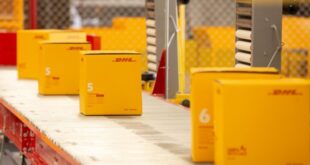The recession is more or less over, according to a middle-of-the-year review of the Inland industrial market. Things are likely to get better, with more activity and job growth on the horizon. And many brokers are watching a certain mega-industrial project proposed for Moreno Valley.
The industrial real estate brokers who attended NAIOP Inland Empire’s 2015 Mid-Year Market Review must have loved what they heard.
Not only is the Inland economy in full recovery mode, but its industrial sector is the driving force behind much of that comeback, according to Inland economist John Husing and a panel of brokers who discussed the state of industrial development in the two-county region.
Husing, who delivered the conference’s opening address, told the crowd of about 150 that the local economy is stronger now than it was before it fell victim to the recession, along with the rest of the country, in 2008.
“It’s OK to invite my wife and me to parties again,” Husing quipped, a reference to the pessimistic economic reports that he’s been delivering to Inland audiences for the last four or five years. “I’m no longer the gloomiest person in the room.”
Husing noted that the Inland Empire has added about 190,000 jobs during the last four and a half years, about 50,000 more than it lost during the recession, which hit its worst point in 2010.
“Not only have we added 50,000 jobs, but you’re talking about a pay scale of $40,000 and up, in a lot of cases,” Husing told the gathering at the Ontario Convention Center. “It was also done without the housing market being a major factor.
“That’s extremely solid growth, and it’s a great thing to see.”
The Inland region added more jobs during 2013 and 2014 than any other major metropolitan region in the state except Los Angeles County, and it could add as many as 60,000 jobs next year, depending on whether the housing market continues to improve, Husing said.
“Housing is already doing well, but if it gets stronger I think we might add more than 60,000 jobs,” Husing said.
About one-third of the jobs since the deepest point of the recession have been in the industrial sector, with some of those technically falling into the narrower category of manufacturing, Husing said.
“That shows how important the industrial sector is to the Inland Empire,” Husing said. “When it comes to industrial markets, the Inland Empire is the number one place, with our proximity to the ports and supply of available land. There’s no industrial market like it anywhere else in the United States.”
But the full impact of the logistics on Riverside and San Bernardino counties can’t be measured in job numbers: logistics workers spend at least some of their paychecks in the region, the facilities themselves pay utility and other taxes and the fulfillment centers generate much-needed sales tax revenue for the city in which they’re located.
“The sales tax revenue is true of every fulfillment center except Amazon,” Husing said in reference to the online retail giant that operates major logistics facilities in Moreno Valley, Riverside and San Bernardino. “In their case, the sales tax is distributed throughout the state. That’s the deal [Gov. Jerry Brown] cut to get them to come here, and that needs to be changed.”
Husing, who has been studying the Inland economy since the mid-1960s, sounded as optimistic as he ever has.
“I really don’t see anything derailing this,” he said afterward. “A recession happens when there is a flaw in the fundamentals, like the bad mortgages, but I’m not seeing any flaws. I think it would take some huge event on the outside, like a war somewhere, to derail this.”
Following Husing’s remarks, a panel of local brokers moderated by Frank Mottek, anchor of CBS Radio’s Money News, gave their assessment of the Inland industrial market, which was more or less in line with Husing’s.
“If you don’t work here, it’s very difficult to grasp the velocity of this market,” said Steve Bellitti, senior executive vice president with Colliers International. “In some markets, a 200,000-square-foot is considered. In the Inland Empire, we’re doing projects one million square feet and larger, and we have room for a lot more.”
Since 2012, there have been approximately 35 logistics projects developed in the United States of one million square or more, and one-third of those were built in the Inland region, said Kim Snyder, president of Prologis’ southwest region.
A lot of that has been the growing trend toward consolidation – businesses grouping their logistics operations in one or two places – said Snyder, whose territory includes all of Riverside and San Bernardino counties.
A lot of commercial brokers, including some outside the Inland Empire, are watching the World Logistics Center, the proposed project in Moreno Valley that would cover 40 million square feet at build out, or roughly 700 football fields, Snyder said.
That project, by developer Highland Fairview in Moreno Valley, is being seen as a test case by a lot of industrial brokers, mostly because of the opposition its generating and its sheer size.
“It has lot of entitlements attached to it, the AQMD is all over it and it’s attracted so much attention that a lot of people are keeping a close eye on it,” Snyder said. “It could be a test case for the whole industry, if it passes.”
 IE Business Daily Business news for the Inland Empire.
IE Business Daily Business news for the Inland Empire.


